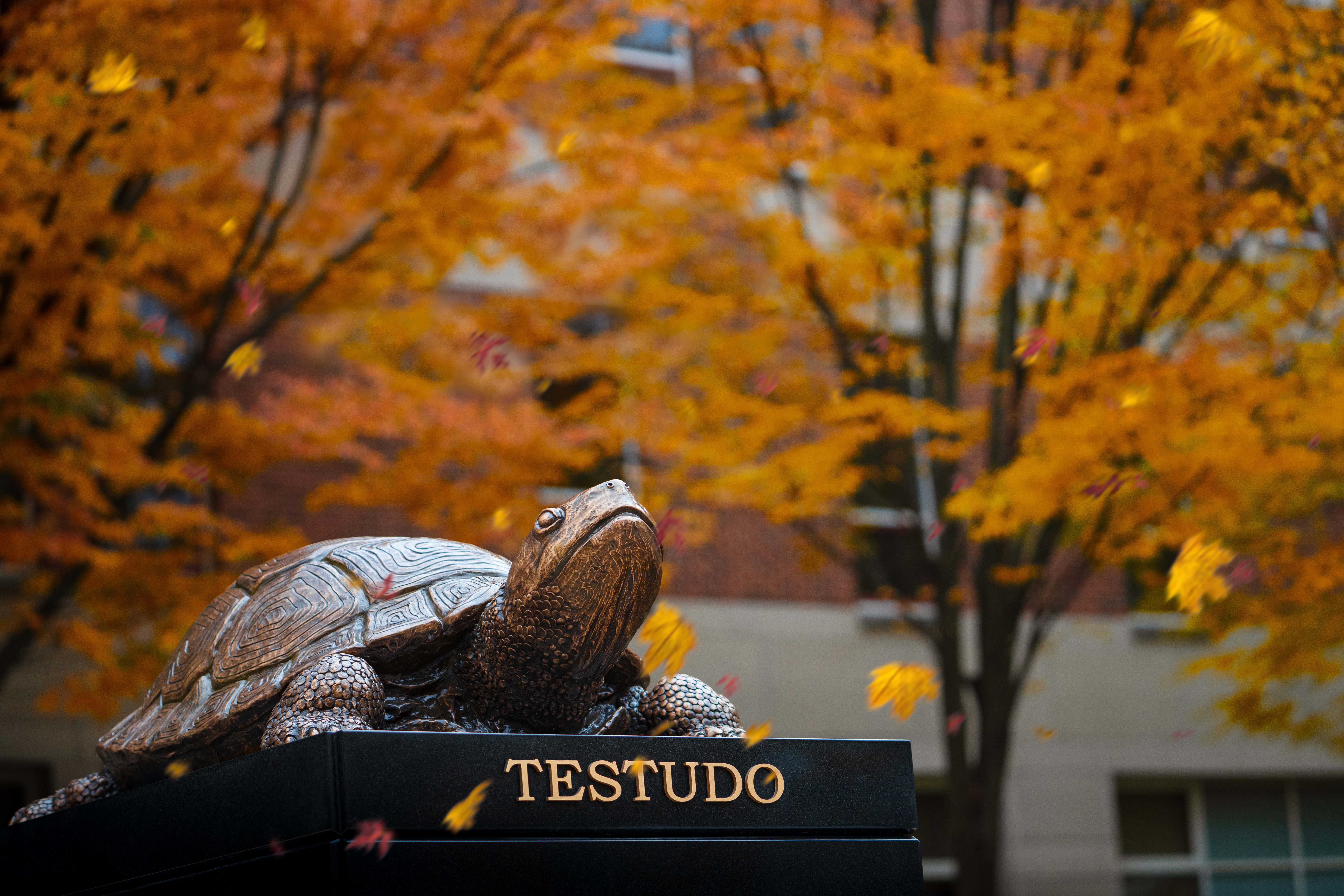
Campus Attractions
Explore the beauty of our campus
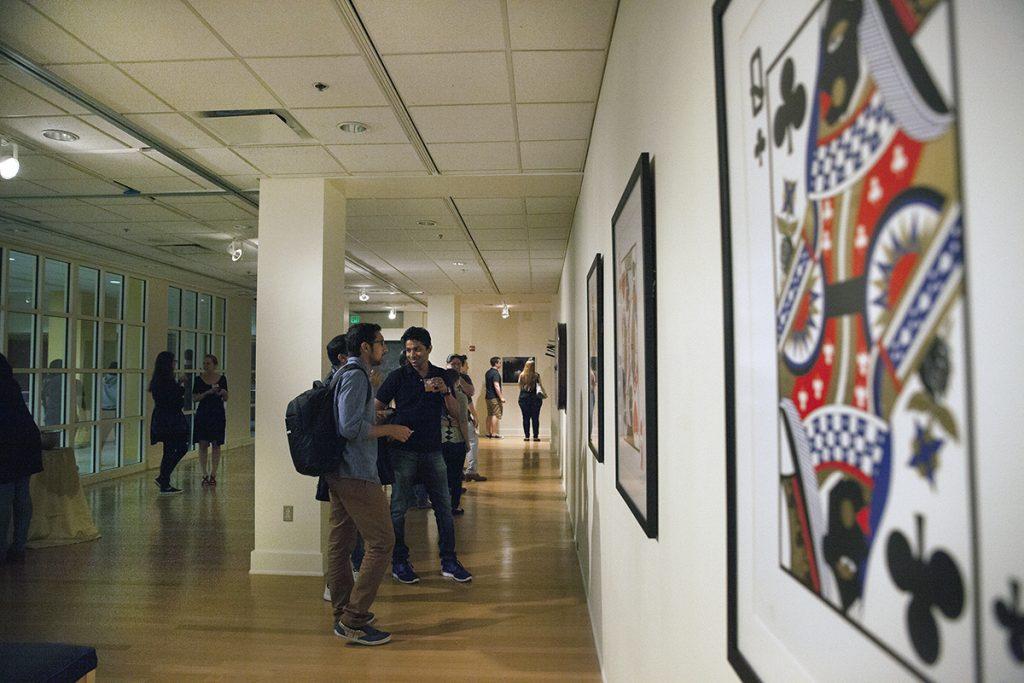
The Stamp Gallery
The gallery provides the community with a venue for creative, innovative, and multicultural visual and performing arts. This educational gallery offers a means for the arts to reach a very large and diverse population. The Stamp Gallery is located on the first floor of the Adele H. Stamp Student Union Center for Campus Life, directly upstairs from the food court.
Learn More About the Stamp Gallery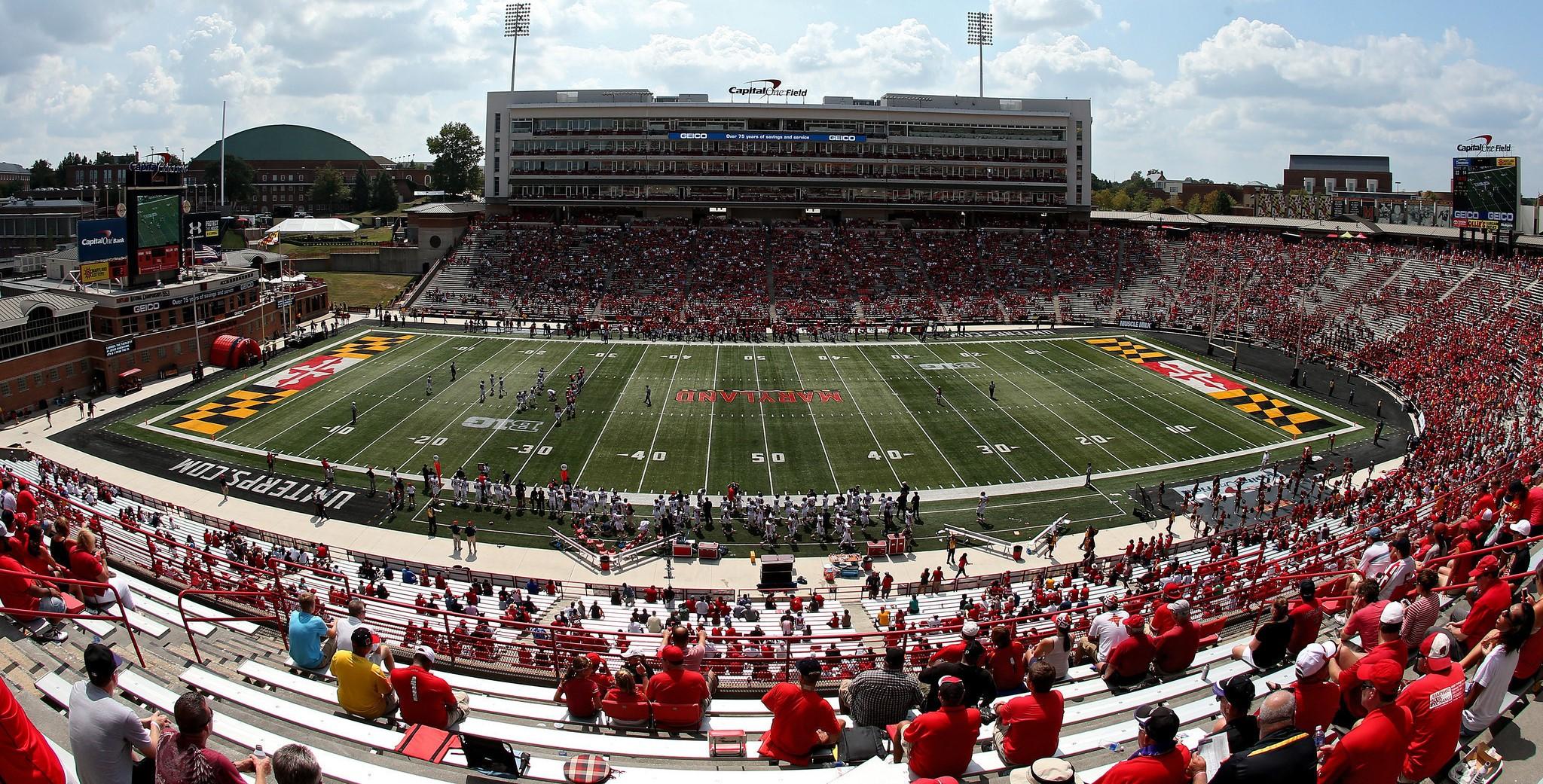
Capital One Field at Maryland Stadium
Maryland Stadium is the home of the Maryland Terrapins football and lacrosse teams. In 2012, the university installed a high-tech turf field at the home of Maryland football, designed to keep our athletes cool. A 2009 stadium expansion increased capacity and added skyboxes, a new team store and enhanced seating for fans with disabilities.
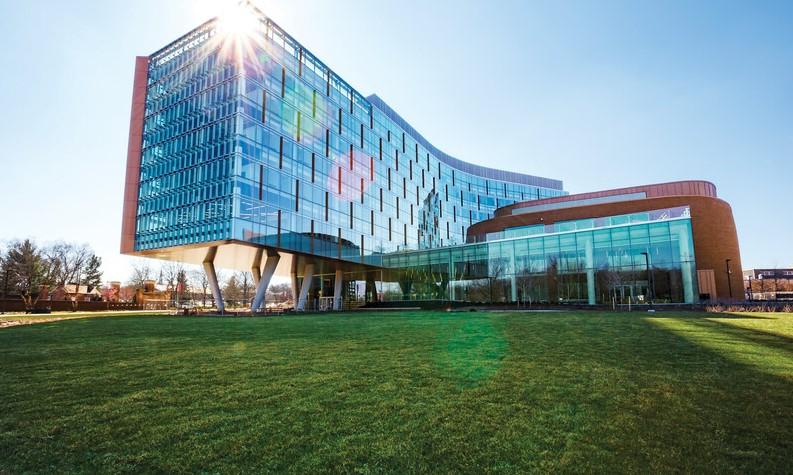
The Brendan Iribe Center
The newly built Brendan Iribe Center for Computer Science and Engineering is home to our Computer Science school. Its six floors support groundbreaking research in virtual and augmented reality, artificial intelligence, robotics, computer vision, algorithms, programming languages and systems. Be sure to visit the rooftop gardens and public maker spaces!
Explore More About The Brendan Iribe Center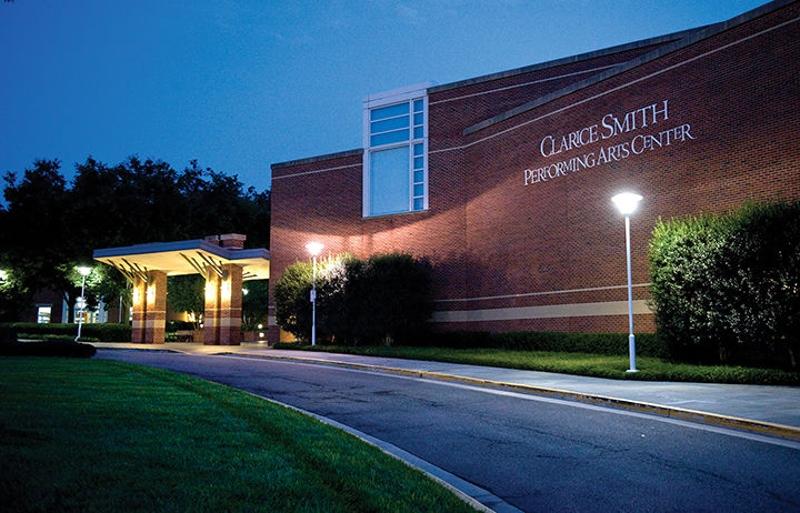
Clarice Smith Performing Arts Center
The Clarice Smith Performing Arts Center is the largest single building ever constructed by the State of Maryland. The 318,000-square-foot performing arts center, designed by Moore Ruble Yudell, is located on 17 acres at the northwest end of campus. A state-of-the-art performing arts "village," comprised of 10 interconnected structures, the Center celebrated its official dedication on September 29, 2001. The center is named for a well-known Virginia artist and collector, Clarice Smith, who attended the university before continuing her art studies at the Corcoran School in Washington and at George Washington University, where she taught watercolor and portrait painting to advanced degree candidates. Smith has had numerous solo exhibitions in galleries in the United States and abroad. Together with her husband, real estate developer Robert Smith, the Smiths have become the largest private donors ever to a public university in the State of Maryland. Up-to-date information about performances and ticket sales is available at their website.
Discover More Arts and Performances at the Clarice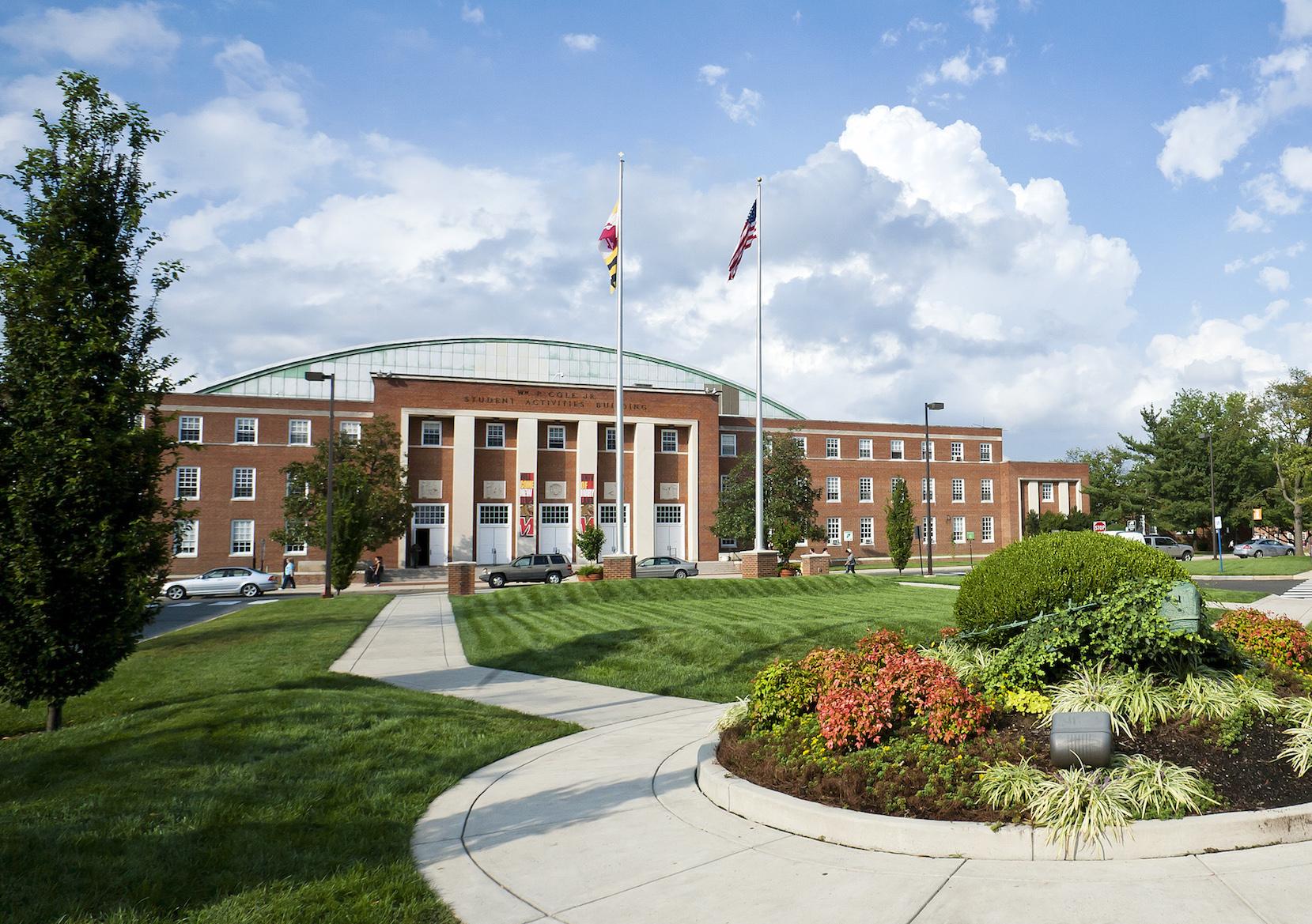
Cole Student Activities Building
Constructed in 1955 and named for Judge William P. Cole, Jr., Class of 1910 and chairman of the Board of Regents from 1944 to 1956, the building is commonly referred to as "Cole" or "Cole Field House." The Terps defeated the University of Virginia in both the first (December 2, 1955) and last (March 3, 2002) games in Cole Field House. Overall, 13 men's All-Americans and 4 women's All-Americans have played at Cole. Maryland men's basketball remained undefeated at Cole during its last season and went on to win the National Championship.
Driskell Center (located within Cole Student Activities Building)
The David C. Driskell Center for the Study of the African Diaspora, is named in honor of the preeminent artist and art historian as well as beloved teacher and scholar, who taught at the University for 21 years. Following the example of Driskell, the Center will provide future generations of students, faculty, and scholars from around the world a unique opportunity to study Africa and the African Diaspora from multidisciplinary perspectives, particularly arts, languages, literature, and history.
Learn More About the Art At The Driskell Center
Xfinity Center
The Xfinity Center athletic arena opened in the fall of 2002 and replaced Cole Field House as the College Park venue for Maryland basketball. Xfinity Center has a seating capacity of 17,950. In its first season, a school-record 281,057 fans witnessed Terrapin men's basketball games for a per-game average of 17,566; this figure ranked rank fifth in the nation for the 2002-2003 season. An additional 1,500-seat gymnasium serves as home to the Terps' volleyball, gymnastics, and wrestling teams, and the Nextel Heritage Hall multi-purpose room (capacity 400) is equipped to host banquets and press conferences, and serve as a pre-game restaurant suite overlooking the competition arena. Visitors can learn about the men and women who have forged the Maryland Athletics program among the nation's elite as they stroll through the Terrapin Walk of Fame and History. The National championship trophies for the men's (2002) and women's (2006) basketball teams are also housed at the Center.
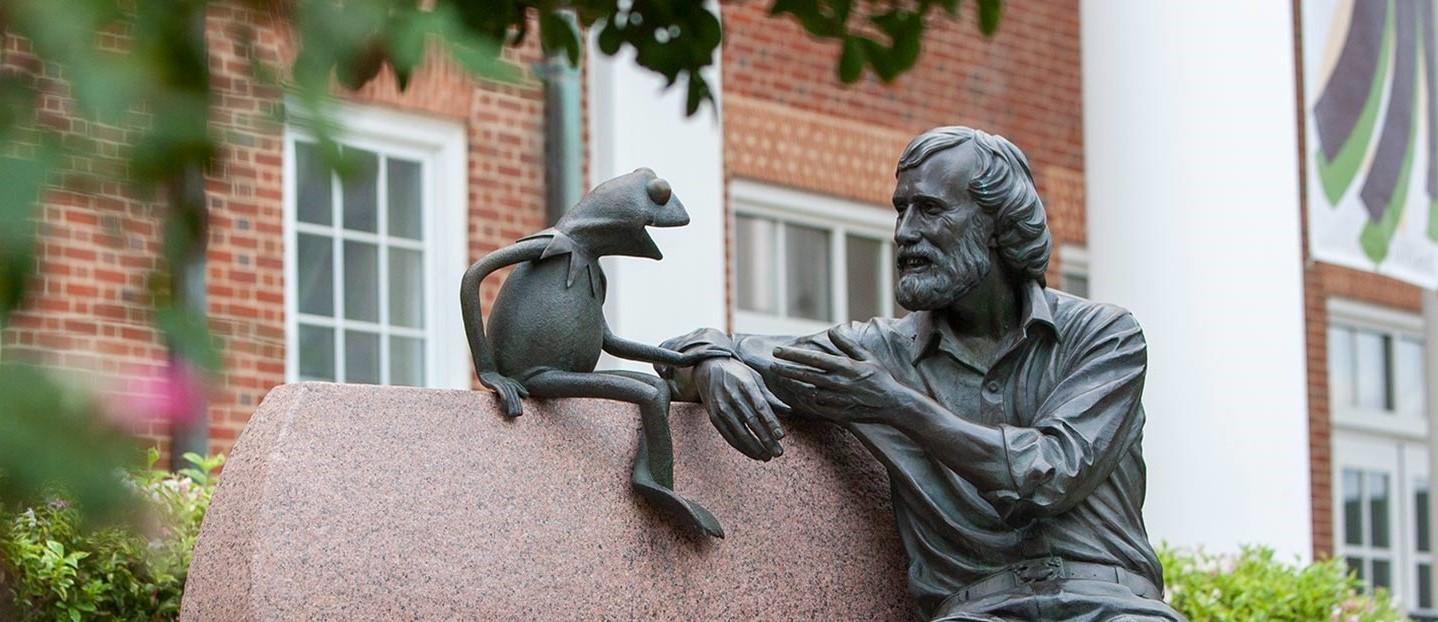
Jim Henson Statue and Memorial Garden
The University of Maryland dedicated the statue of Jim Henson conversing with Kermit the Frog and the memorial garden which surrounds it, outside the Adele H. Stamp Student Union Center for Campus Life, on September 24, 2003. Henson, who graduated from the University of Maryland in 1960, was known the world over for his creation of the Muppets and his work in television with Sesame Street and The Muppet Show. His work on film included six movies starring the Muppets and two fantasy pieces, The Dark Crystal and Labyrinth. The statue, created by sculptor Jay Hall Carpenter, captures Jim Henson and Kermit in bronze, sitting on a red granite bench, and weighs 450 pounds. It is surrounded by a memorial garden, designed by landscape architect Philip Cho. The project was funded in part by gifts from the classes of 1994, 1998, and 1999.
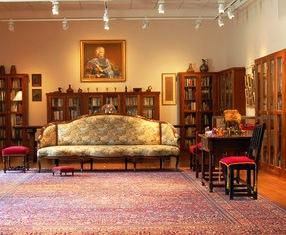
Katherine Anne Porter Room in Hornbake Library
Katherine Anne Porter received both a Pulitzer Prize and National Book Award and is widely regarded as a master of short fiction. Her personal experiences witnessing history's transformative people and events throughout her life, which spanned the 19th and 20th centuries, fueled many of her short stories. This hidden historic treasure, located in the heart of the campus, was designed to resemble her Washington D.C. home's parlor and features a 3,700-volume book collection and heirlooms. The Katherine Anne Porter Room is open Mondays and Thursdays from 1:30-4:30 pm.
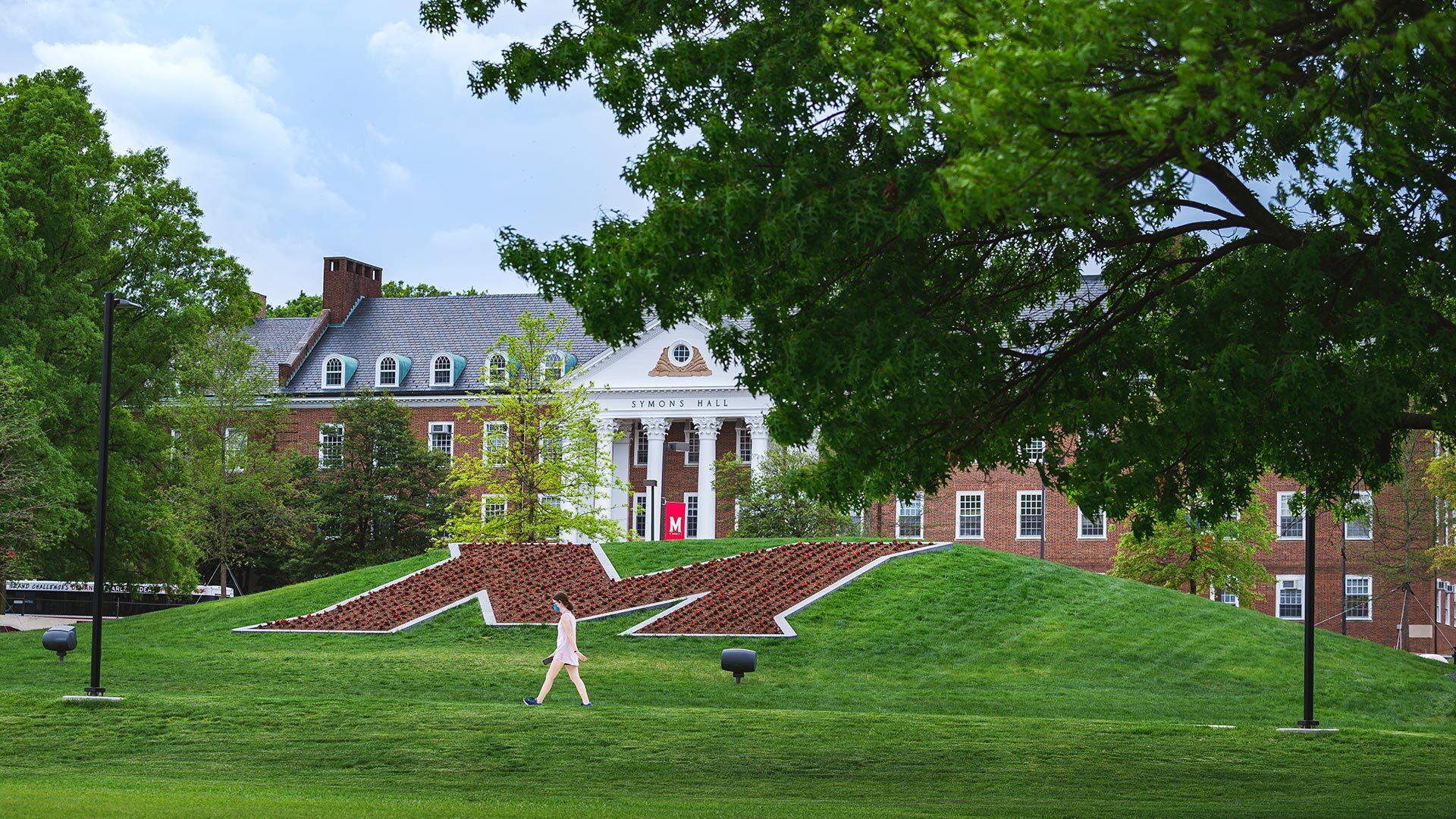
"M" Circle
The circle adjacent to Campus Drive features the shape of an "M". Each fall, about 1,200 new tulip bulbs are planted in the "M" circle. After flowering the following spring, the bulbs are replaced by 3,500 warm-weather annuals (usually begonias or marigolds) that bloom until frost. The "M" was created in 1976 by the Department of Physical Plant to commemorate the bicentennial of the founding of the United States.
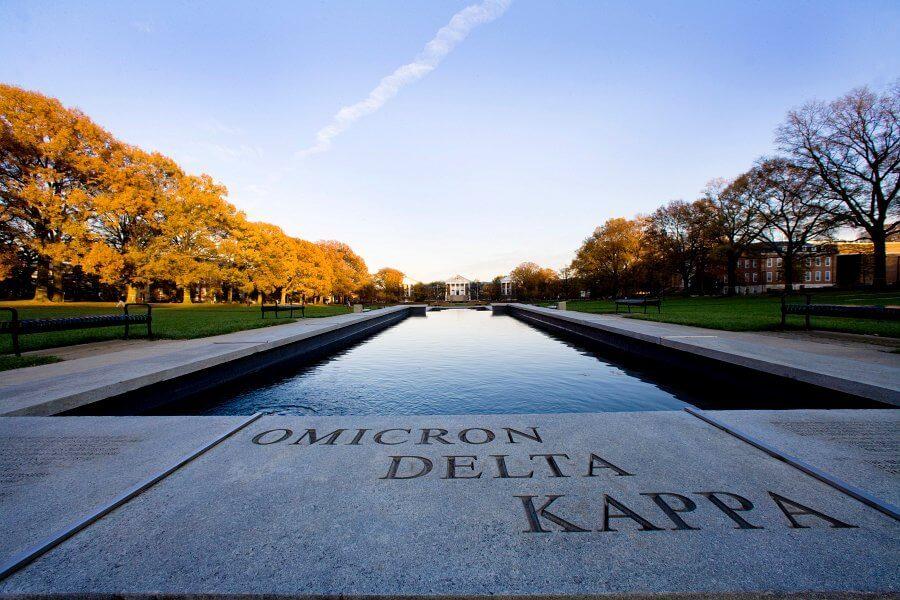
McKeldin Mall - ODK Fountain and Sundial
McKeldin Mall is a nine-acre area between the Thomas V. Miller Jr. Administration Building and McKeldin Library; it originally continued to Anne Arundel Hall and was considered to be the largest academic mall in the country. It was renovated in 1990 when the current configuration of sidewalks and fountain was put into place. The center of the Mall features the Omicron Delta Kappa honor society fountain. The 16-foot by 250-foot fountain honors members of the campus chapter of the Omicron Delta Kappa honor society. Each fountain tier represents one of the leadership qualities found in ODK members. Engravings around the fountain include quotations from Franklin Delano Roosevelt and Martin Luther King, Jr., the symbol of ODK, and a listing of fraternity members from the university; this installation also features a plaque honoring donors who contributed to the building of the fountain. The sun dial, originally a gift from the class of 1965, the Department of Physics and Astronomy, and friends of Professor Uco Van Wijk, who died in 1966, was renovated with donations from the class of 1990.
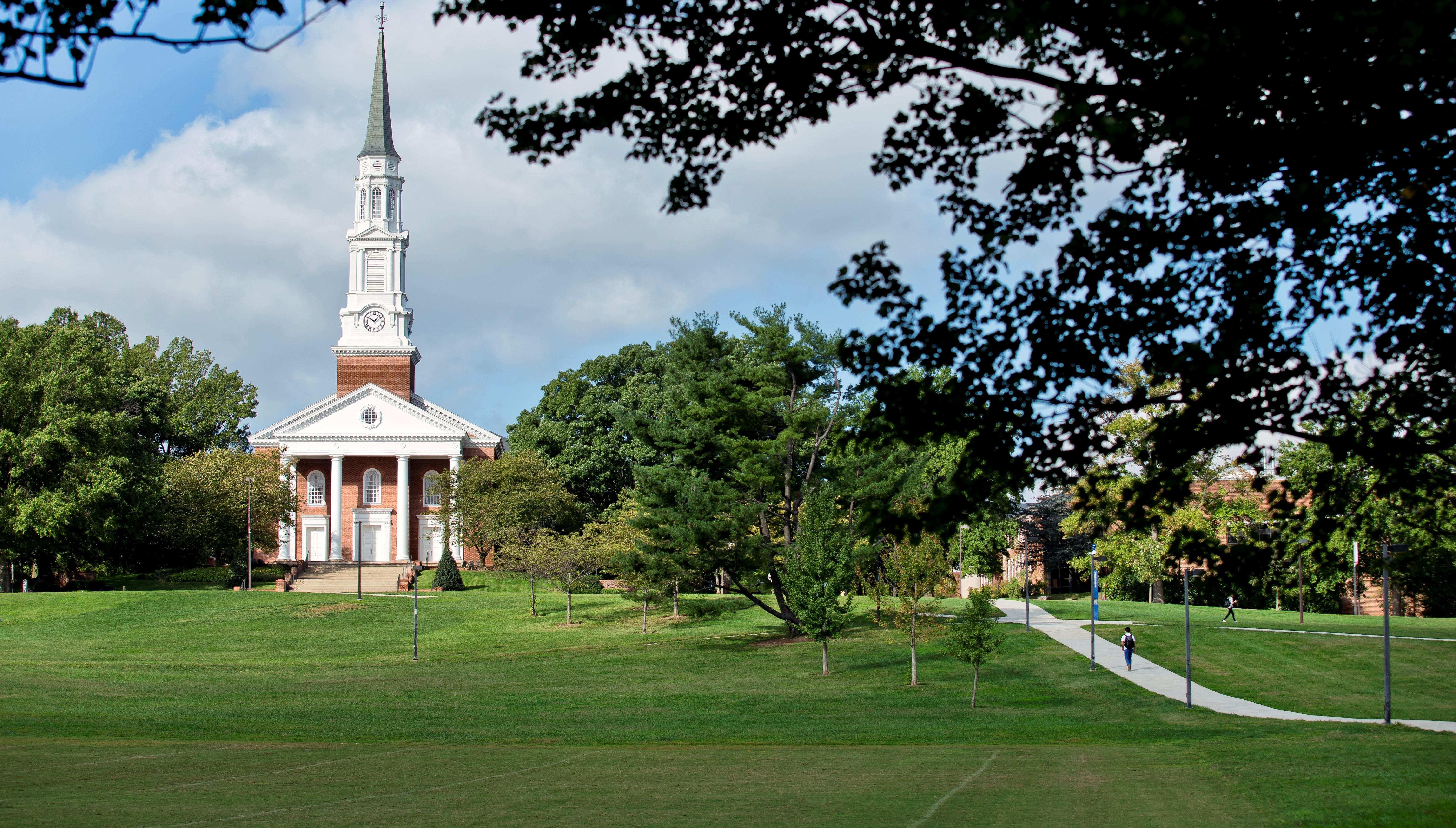
Memorial Chapel
The Memorial Chapel is one of the university's most visible icons but its role as a memorial and the history behind it is what makes it a very special landmark. It was constructed in 1952 to honor the men and women from the university who lost their lives during the country's wars. Designed by Henry Powell Hopkins, the building consists of three chapels: the Main Chapel, the West Chapel, and the Chapel of the Blessed Sacrament. The class of 1992 donated funds to restore the Chapel chimes and clock. The Class of 1997 sponsored the restoration of the Chapel's West Courtyard. Hundreds of weddings and other events are held at the Chapel each year.
Learn More About the Memorial Chapel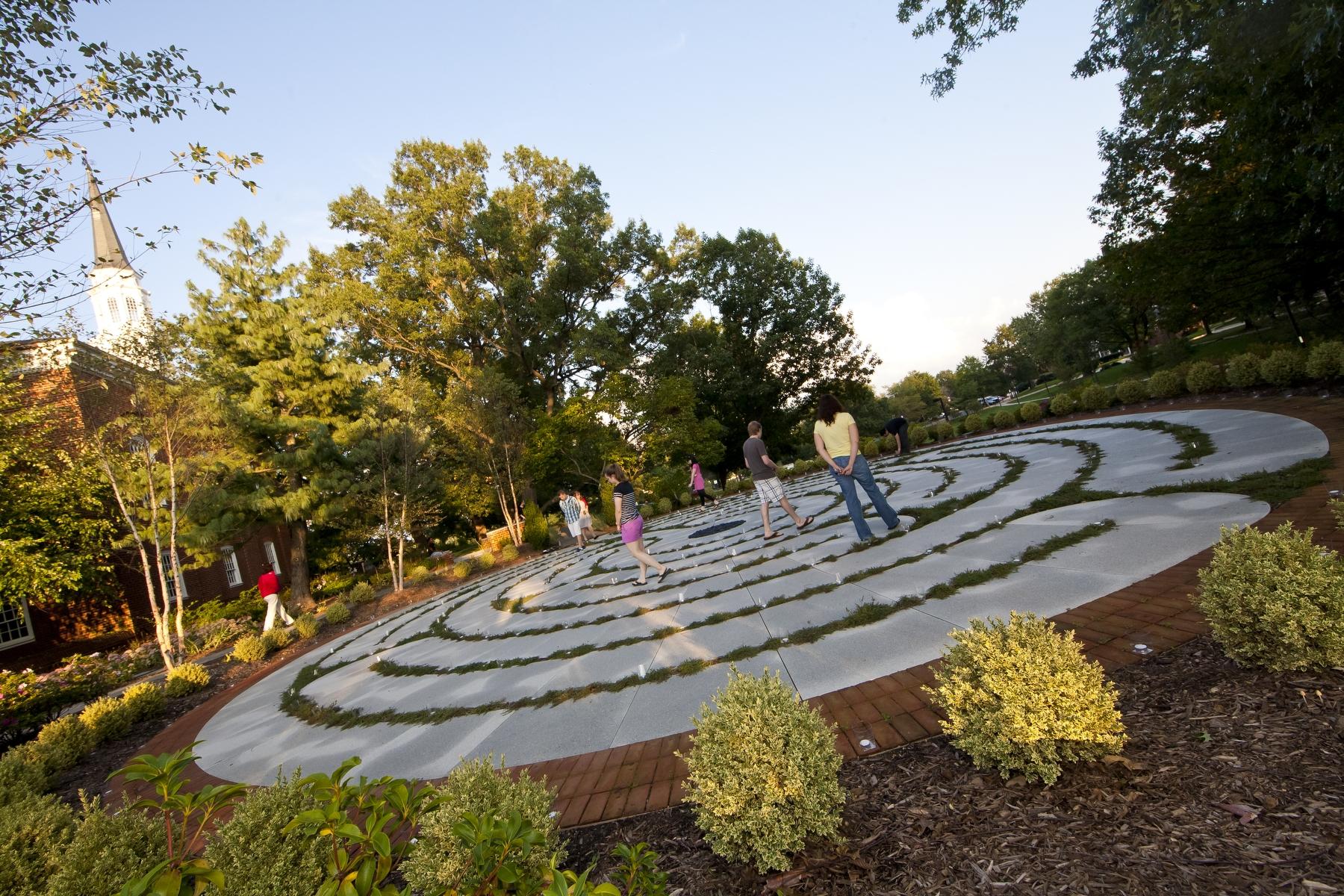
Garden of Reflection and Remembrance
The Garden of Reflection and Remembrance is located on the south side of the Memorial Chapel and features an attractive array of new plant material nestled amidst a mature tree canopy. Features include a granite labyrinth, two sustainable fountains, signature benches with journals to capture the thoughts and feelings of visitors and a restored Vietnam Veterans Memorial. The garden includes a portal through which to pass, a path to explore and discover, destination points to guide ones movement and a sense of surrounding that separates you from your daily activities and allows contemplation.
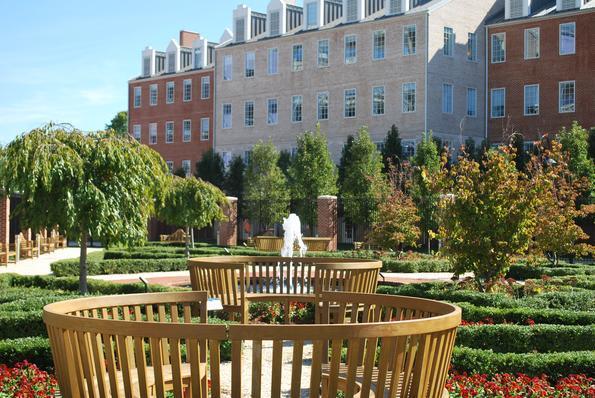
Samuel Riggs IV Alumni Center and Moxley Gardens
The Phillip R. Rever Alumni Hall of Fame at the Samuel Riggs IV Alumni Center was named after Class of 1964 graduate Philip Rever, whose efforts as a member of the center's development committee transformed the hall from an architect's drawing into a three-dimensional tribute to Maryland's most famous graduates. The hall is located outside Orem Alumni Hall on the center's first floor. Its exterior glass wall provides plenty of natural light, allowing visitors to take in the view of the center's Dessie M. Moxley Gardens.
Discover More Events and Alumni Connections at Riggs Alumni Center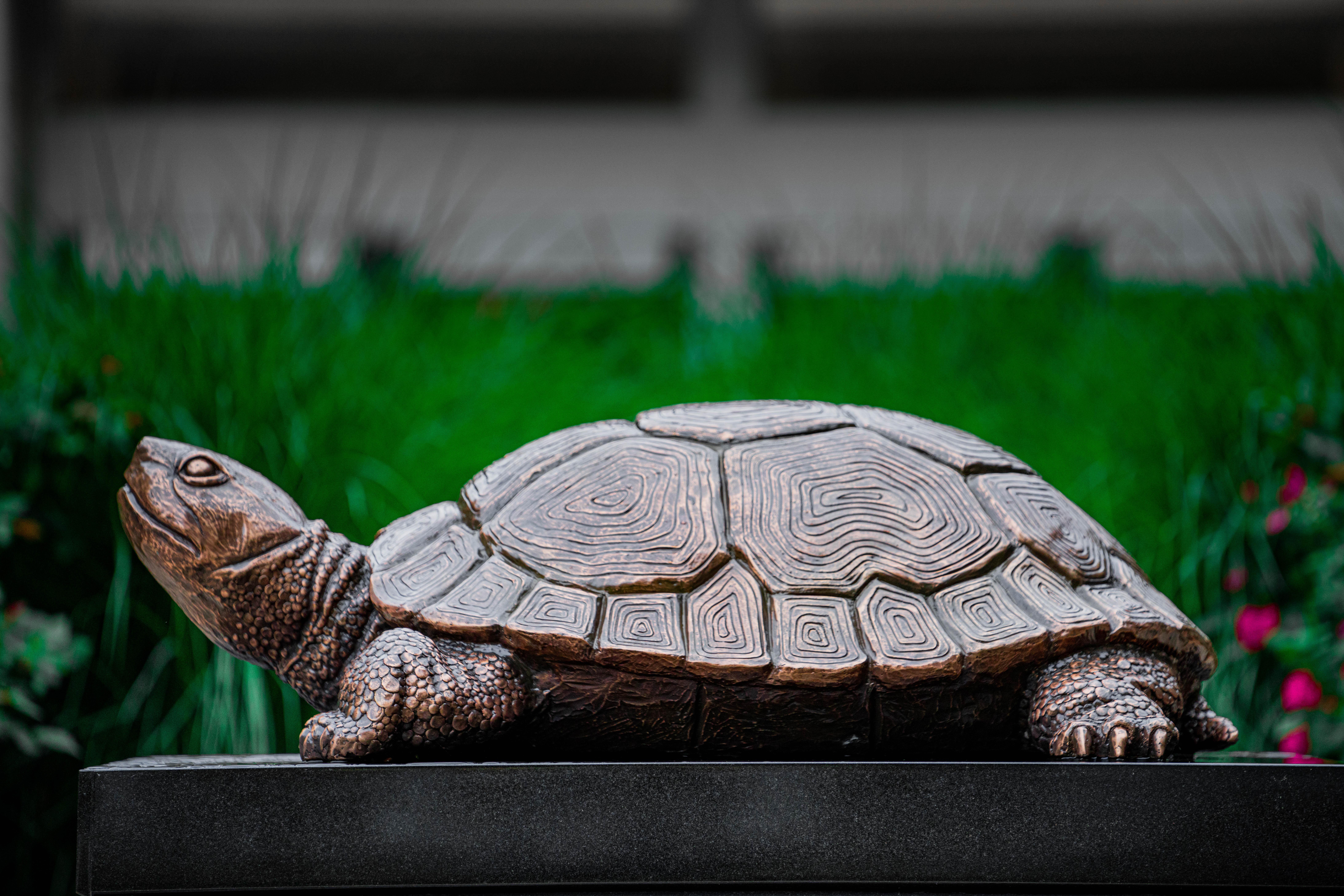
Testudo Sculptures
Bronze Testudo sculptures preside over our campus, and the act of rubbing his nose for good luck is our most enduring tradition, going strong since 1933! Since the early 1990's, students have left Testudo offerings of every imaginable kind: food, alcohol, poems, computer disks, candy, flowers, coins—hoping that Testudo will bring them luck at final exams time. Replicas of Testudo can be found at seven locations around campus: McKeldin Library, Van Munching Hall, Xfinity Center, the Adele H. Stamp Student Union, two at Maryland Stadium, and the Riggs Alumni Center.

Frederick Douglass Square
Dedicated in 2015, this garden prominently honors one of Maryland’s greatest native sons, Frederick Douglass, on Hornbake Plaza. Born into slavery on the Eastern Shore of Maryland, Douglass taught himself how to read and write, teaching others as well. He escaped from slavery and went on to become a powerful orator, a counselor to presidents, and a leader in the fight to end slavery and for equal rights among all men and women. This garden area pays homage to his legacy with a bronze statue of Douglass mid-speech and his words etched in stone pavers and cut into a steel wall. As past president Dr. Wallace Loh noted, we honor Douglass “as an enduring role model for social justice and the transformative power of education—values that are at the core of our institution's mission.
Learn More About Frederick Douglass SquareRossborough Inn
The Rossborough Inn was constructed circa 1803, and in 1858 it was sold by the Calvert family to the newly established Maryland Agricultural College. In 1938-39 the vacant structure was restored under the direction of the Works Progress Administration. The decades of the 1930s-1940s were a pivotal period for the University of Maryland, and the Rossborough Inn played a crucial role in transforming the image of the university from its agricultural roots to that of a major academic institution.
Explore the History Behind Rossborough Inn
The Art Gallery
The Art Gallery was founded in 1966 and housed initially in the Tawes Fine Arts Center. In 1976, the Gallery moved to the Art-Sociology Building. Five to eight exhibitions are produced each year, often accompanied by catalogues, lectures, gallery talks, and panel discussions.
View Exhibits and Learn More Information About The Art Gallery
